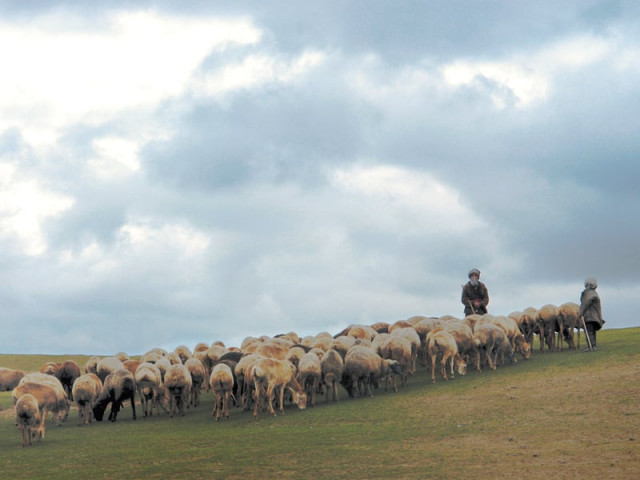Up north and personal: Across the border
Zahrah Nasir returns to Afghanistan to fulfill her promise.

Afghanistan has always pulled me into its vortex with an addictive ease. I grew up aware of a goal in life: an understanding that there was an unspecified ‘something’ that I was purposefully intended to do, that there existed a path I had to follow and that all would become clear in ‘the end’. It was in this peculiar frame of mind that I first travelled to Afghanistan with the Mujahideen, back in 1983 when they were fighting for freedom from the Soviet Union.
The path was fraught with danger at every step yet it was the road I instinctively knew I had to follow. Through the twists and turns of the years that followed, I carried a promise I had made to my ‘Brothers in Arms’, sometimes waved like a banner, at other times filed away in the dark recesses of my mind but always there.
The promise, made in a Mujahideen base camp in the mountain valley of Jegdalek just before Soviet troops moved in backed up by helicopter gunships and MiGs, was that ‘I would help’ and promises are something I keep.
It took 28 long years before I could finally offer any help. With the invaluable assistance of Sauman Das Gupta, an Australian national of Indian origin, I started work on formulating the rehabilitation of Jegdalek. The plan was to tackle basics like organic agriculture, water provision and usage, alternative energy, education, and medical care. It was for this reason I had finally returned to Afghanistan.
I worked hand in hand with the Australian Wind Energy Institute, a Pakistani NGO by the name of OCEAN (Organisation for the Conservation of Nature and the Environment) and an incredible team of experts. All of us were volunteers, as funding has yet to be confirmed, united in the hope of aiding the inhabitants of Jegdalek and one day introducing similar projects across Afghanistan, Pakistan and wherever else it could conceivably be applied.
There is no denying that our plans were ambitious, or that our task was severely hampered by the ever worsening security situation, but we were determined. It was for this very reason that I found myself in a government vehicle, surrounded by bodyguards, heading out of Kabul in the bitter cold. Our destination was the city of Kunduz and not, as originally planned, Jegdalek itself — the Taliban were in the way.
As the magnificent landscape rolled past my window, I caught glimpses of mountains, rivers, villages, towns and cities, evoking their own personal collage of peace, warfare, reconstruction, renewal and rehabilitation. In Shamali, traditional homes dotted the landscape as blue wood smoke curled from the chimneys perfuming the bucolic atmosphere where time appears to have stood still.
The infamous bagram Airfield was nestled, couchant lion style, on rock strewn barrens against a backdrop of grey shaded peaks which poked holes in the sky.
The lethal icy road, under the soaring frozen Salang Mountains, snaked and slithered, assisted by a series of tunnels. Exhaust fumes from endless convoys of heavy trucks travelling the highway clogged the air, bringing tears to my eyes and left a bitter taste in the back of my throat. Salang also conjured up fierce images of Ahmad Shah Massoud and his legendary Panjshiri Mujahideen who battled the armoured might of the now disbanded Soviet war machine.
Passing through Jabal Saraj, once a battlefield along with Doshi and Puli-Khumri, we drove on a branch of the road which looped away towards Bamiyan, passing through ramshackle Aliabad and then finally to Kunduz.
The sprawling agricultural city of Kunduz has seen more war and devastation than any other part of the country. Behind the numerous barricades that serve to protect him from suicide bombers and other threats, former Mujahideen commander and present governor of Kunduz province, Anwar Jegdalek, doggedly works for peace, harmony and understanding on all fronts, be they national or international.
He is usually surrounded by handpicked men of Jegdalek from the ranks of the police and the Afghan National Army. He is, after all is said and done, their tribal chief as well as their protector and friend and is also the person with whom, naturally, we are coordinating our plans. The Governor’s household in Kunduz, along with the nearby offices from which he works, are Jegdalek in microcosm and, in conjunction with a similar setup in Kabul, I could correlate project basics to a large extent without having to run the Taliban gauntlet…..for now!
As we sat on the carpet sipping green tea, our armed bodyguards contributed to the information flowing around the room. Soon I was loaded into a police pickup with seven gunmen in tow and driven around, at breakneck speed, to see the sights. We reached Dasht-e-Audan, a seemingly limitless expanse of rolling steppe country on the Tajik border where Kuchi nomads settle in with their flocks of fat tailed sheep, goats and camels but in the frigid cold, only a handful of shepherds now wandered.
Throughout the 1,500-kilometre journey from Kabul to Kunduz and then back to Kabul, punctuated with side trips to the Tajik border and into the Paghman Mountains outside Kabul, I passed through territory many would be scared to tread and wisely too. For travelling in Afghanistan is no picnic — the necessity of having bodyguards and dodging in and out of Isaf/Nato/ANA convoys which are primed for instant action is definitely not recommended for the faint hearted. For me, the expedition was worth every second, each one underlined by the undaunted belief that both peace and the project are definitely ‘doable’ if not already a ‘done deal’.
Published in The Express Tribune, Sunday Magazine, January 22nd, 2012.



















COMMENTS
Comments are moderated and generally will be posted if they are on-topic and not abusive.
For more information, please see our Comments FAQ